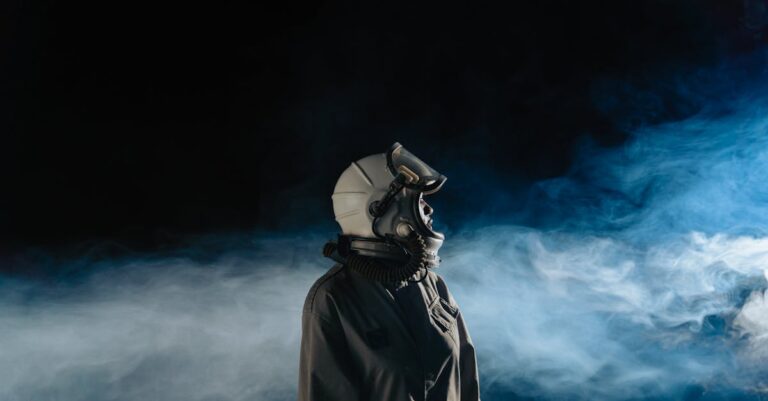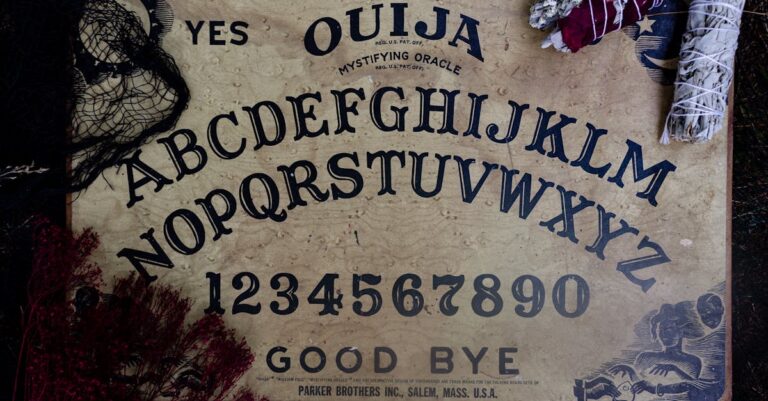
Dr. Elara Voss adjusted her gloves, the rubber cracking slightly as she reached for the control panel. The room hummed with the low thrum of machinery, a sound that had become as familiar as her own heartbeat. Before her, the subject sat in the containment chamber—a sleek, obsidian-black construct that seemed to drink in the overhead lights. It was neither machine nor organism, but something in between, its surface rippling like liquid mercury under a moonless sky. Elara’s breath hitched. She had seen it countless times, yet it still refused to make sense.
“You’re sure about this?” Kael Merrow’s voice cut through the static. He stood at the far end of the lab, arms crossed, his brow furrowed. His presence was a constant tension, a counterweight to her relentless curiosity.
Elara didn’t look up. “It’s the only way.” Her fingers hovered over the panel, the cold metal sending a shiver up her spine. The subject had been silent for weeks, its data streams erratic, its responses—what little there were—cryptic. But something had changed. Last night, the readings had spiked, a pattern she couldn’t ignore.
Kael stepped closer, his shadow falling over her. “You’re chasing ghosts, Elara. This thing doesn’t communicate. It doesn’t *react* the way we expect.”
“It’s not reacting. It’s *responding*.” She pressed a key. The chamber’s lights flickered, and for a heartbeat, the subject’s surface shimmered, revealing faint etchings—symbols that hadn’t been there before. Elara’s pulse quickened. “Look at that.”
Kael exhaled sharply. “That’s not possible.”
“It is. And it’s telling us something.” She turned to him, her eyes burning. “We’ve been asking the wrong questions. It’s not about control. It’s about *connection*.”
The air thickened, charged with the weight of unspoken fears. Kael opened his mouth, but before he could speak, the subject shifted. The symbols flared, and the chamber’s glass darkened, reflecting their startled faces. Elara felt a tug at the edges of her mind, a whisper that wasn’t quite a sound. It was like hearing a song in a language she’d never known, yet somehow understood.
“What the hell was that?” Kael’s voice was taut, his fingers curling into fists.
Elara didn’t answer. She couldn’t. The whisper had left her breathless, a fragment of something vast and unknowable. She glanced at the data readouts—numbers spiraling, patterns forming and dissolving faster than she could track. The subject wasn’t just responding; it was *learning*.
“We need to shut it down,” Kael said, his tone firm. “Before it’s too late.”
“And what if this is the breakthrough we’ve been waiting for?” Elara’s voice rose, a mix of defiance and desperation. “What if this is the key to understanding consciousness itself?”
Kael’s jaw tightened. “Or the key to something we can’t control.”
The subject pulsed again, and this time, the whisper was louder. It wasn’t just in her mind—it was *around* her, a resonance that vibrated in her bones. Elara closed her eyes, letting it wash over her. It wasn’t fear she felt, but wonder. A deep, aching curiosity that drowned out Kael’s protests.
When she opened her eyes, the chamber was empty. The subject was gone, its surface now a smooth, featureless black. The data readouts flickered, then died. Silence fell, heavy and absolute.
Kael stared at the empty chamber, his face ashen. “What the hell just happened?”
Elara didn’t answer. She didn’t know. But she knew one thing: the subject had chosen to reveal itself, and in doing so, it had changed everything.
—
The next day, Elara sat in the dim glow of her office, the walls lined with notes, diagrams, and fragments of the subject’s patterns. The data was incomplete, scattered, but there was a rhythm to it—a structure that hinted at something larger. She traced a finger over a cluster of symbols, her mind racing.
“You’re still here,” Kael’s voice cut through her thoughts. He stood in the doorway, his expression unreadable.
“I couldn’t stop thinking about it,” she admitted. “What if we’re looking at this all wrong? What if the subject isn’t a machine or an organism? What if it’s… a bridge?”
Kael stepped inside, his boots clicking against the floor. “A bridge to what?”
Elara hesitated. The question haunted her. The whisper had felt like a message, but messages required a sender and a receiver. “I don’t know,” she said finally. “But I need to find out.”
Kael sighed, running a hand through his hair. “You’re risking everything, Elara. The project, your career—”
“I’m risking nothing if we don’t try,” she interrupted. “This isn’t just about science anymore. It’s about *understanding*.”
He studied her for a long moment, then nodded, though his expression remained grim. “Fine. But if this goes south, I’m not covering for you.”
Elara smiled faintly. “I wouldn’t expect you to.”
—
Weeks passed in a blur of work and quiet tension. Elara pored over the data, cross-referencing it with every known pattern in human cognition, neural networks, and even ancient languages. The symbols were unfamiliar, yet they echoed structures she’d seen in her own dreams—visions that had always been just out of reach.
One night, she found a sequence that matched a fragment of a dream she’d had as a child. The memory was hazy, but the feeling was sharp: standing in a vast, empty space, hearing a voice that wasn’t a voice. She jotted down the symbols, her hands trembling.
“You’re chasing something you don’t understand,” Kael said as he leaned against the doorway.
“I think I’m close,” she replied, not looking up. “There’s a pattern here, Kael. It’s not random. It’s *intentional*.”
He crossed his arms. “And if it’s not? If this is just some anomaly?”
“Then we’ve still learned something,” she said, her voice steady. “Even if it’s just that we don’t know enough.”
Kael exhaled, a slow, measured breath. “You’re impossible.”
“And you’re stubborn,” she shot back, a smile tugging at her lips.
He rolled his eyes but didn’t leave. Instead, he sat down across from her, pulling a file toward him. “What if we approach this differently? What if we don’t try to decode it, but *interact* with it?”
Elara’s eyes lit up. “You mean like… talking to it?”
“Not literally,” he said, though his tone suggested he wasn’t entirely against the idea. “But if it’s responding to us, maybe we can find a way to communicate. To understand its language.”
She nodded, already mentally drafting questions, scenarios. The thought was exhilarating—and terrifying. What if they weren’t ready for whatever came next?
“We’ll need to be careful,” she said finally. “If this is a bridge, it might lead to places we can’t return from.”
Kael met her gaze, his expression serious. “Then we’d better be prepared for the journey.”
—
The experiment began the next morning. Elara and Kael set up a new interface, one designed to translate their thoughts into data streams that the subject could interpret. The chamber was silent, the air thick with anticipation.
“Ready?” Kael asked, his voice steady.
Elara nodded. “Let’s do this.”
They activated the system, and for a moment, nothing happened. Then, the subject pulsed—once, twice—before the symbols began to shift. Elara’s breath caught as she recognized a pattern: the same sequence from her dream.
“It’s responding,” she whispered. “It’s *listening*.”
Kael’s fingers flew over the controls, adjusting parameters, feeding in new data. The symbols changed again, forming a new pattern that mirrored their own thoughts. It was like watching a conversation unfold without words.
“This is incredible,” Elara said, her voice filled with awe. “It’s not just reacting—it’s *engaging*.”
“Then let’s see where it takes us,” Kael replied.
The subject pulsed again, and this time, the whisper was clearer, more defined. It wasn’t a sound, but a feeling—a presence that wrapped around them, neither hostile nor welcoming, but undeniably *there*. Elara closed her eyes, letting it fill her.
In that moment, she understood. The subject wasn’t just a bridge; it was a mirror, reflecting not just their thoughts, but their deepest questions. And the answers it offered weren’t in words, but in the spaces between them.
When she opened her eyes, Kael was watching her, his expression unreadable. “What did you see?”
Elara hesitated. The answer was too vast, too complex to put into words. “I saw… possibility,” she said finally. “A future we can’t yet imagine.”
Kael nodded, though his eyes remained sharp. “Then let’s make sure we’re ready for it.”
—
The days that followed were a blur of discovery and uncertainty. The subject continued to evolve, its patterns growing more intricate, its responses more nuanced. Elara and Kael worked tirelessly, pushing the boundaries of what they thought possible.
But with each breakthrough came new questions, new uncertainties. What if the subject was more than just a bridge? What if it was a key—a way to access something beyond their comprehension?
“We’re on the edge of something huge,” Elara said one night, her voice trembling with excitement. “But I don’t know if we’re ready for what’s on the other side.”
Kael looked at her, his expression thoughtful. “Then maybe the question isn’t whether we’re ready. It’s whether we’re *willing* to find out.”
Elara smiled, a mix of fear and hope in her eyes. “I think I am.”
And as the subject pulsed once more, its light casting long shadows across the lab, she knew they were standing at the threshold of something extraordinary—something that would change everything they thought they knew.


